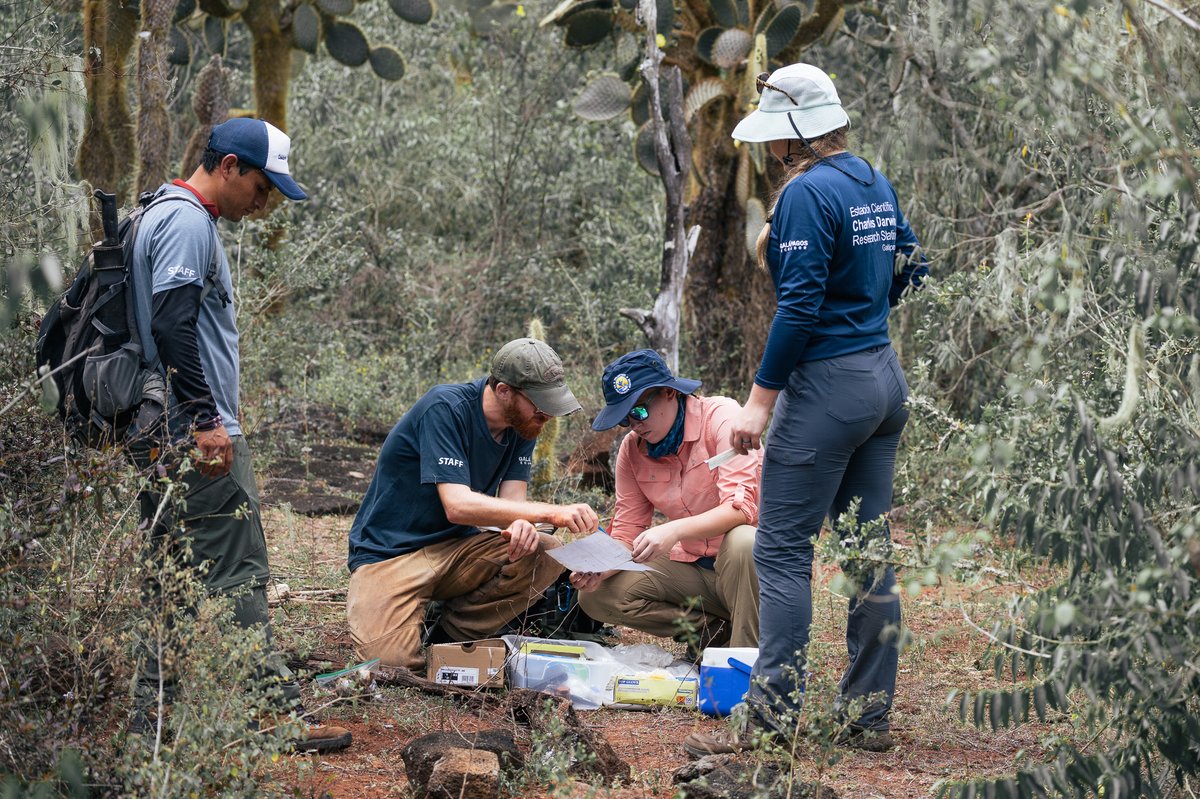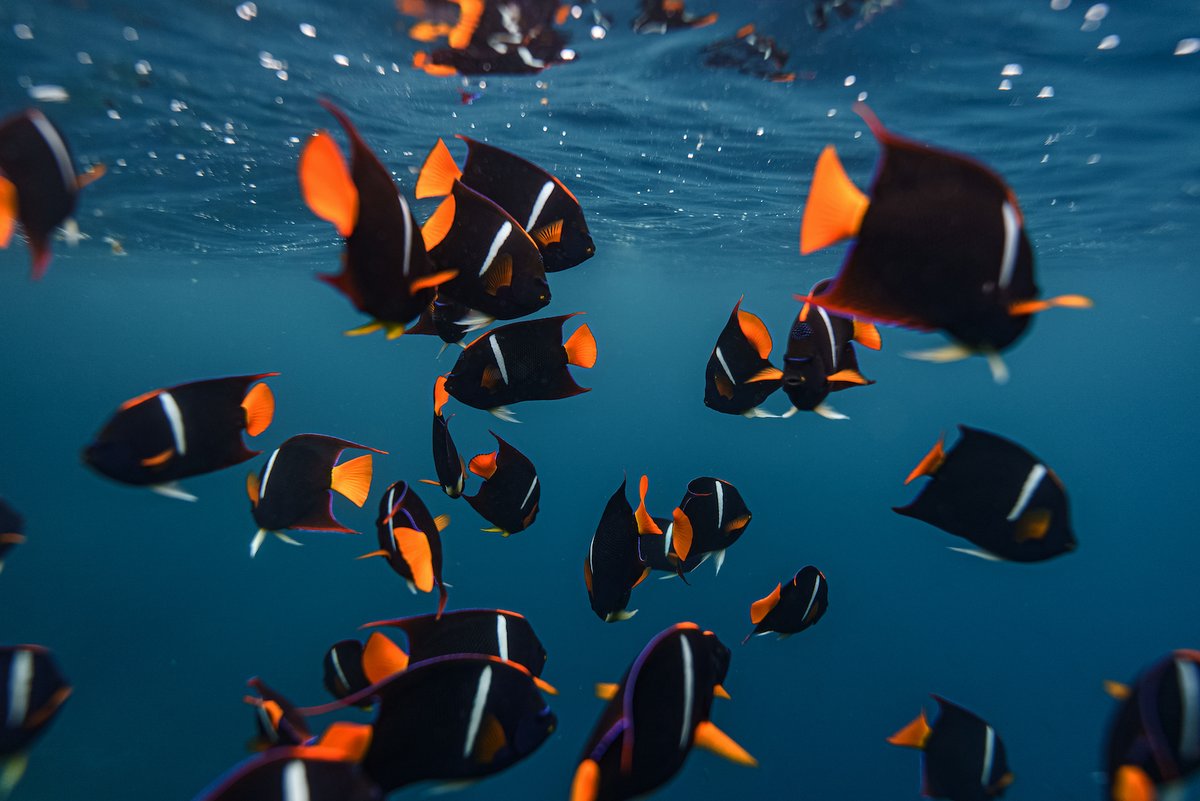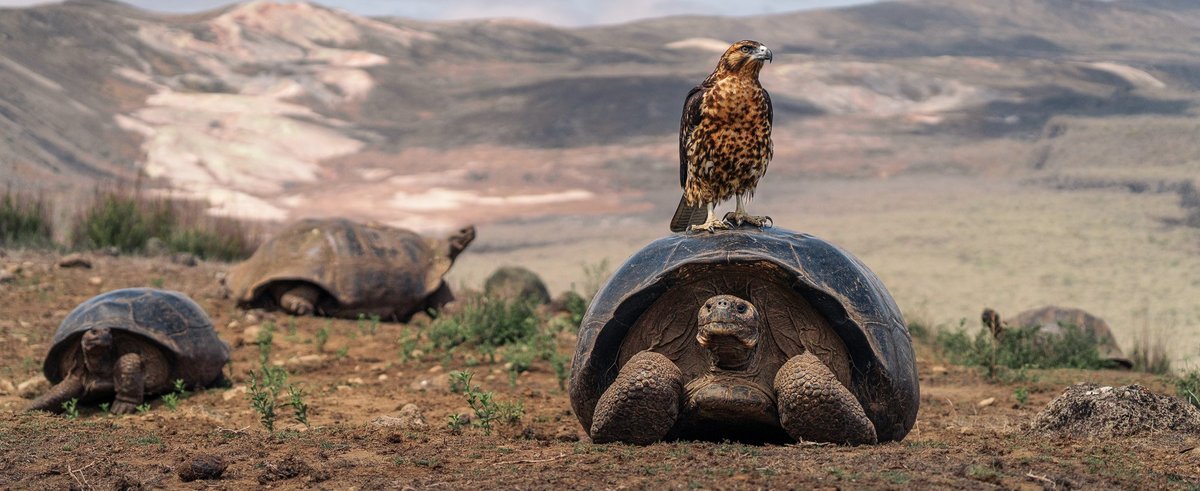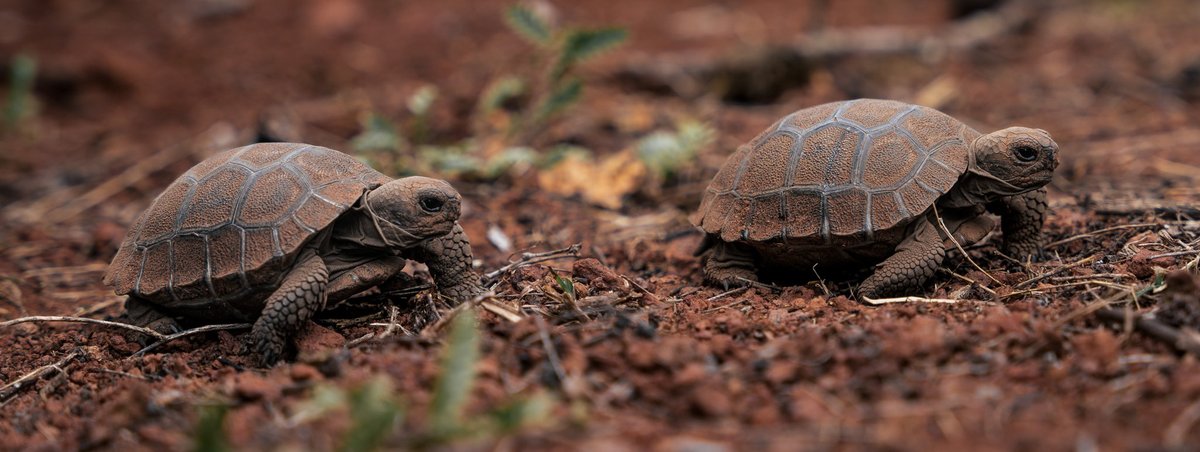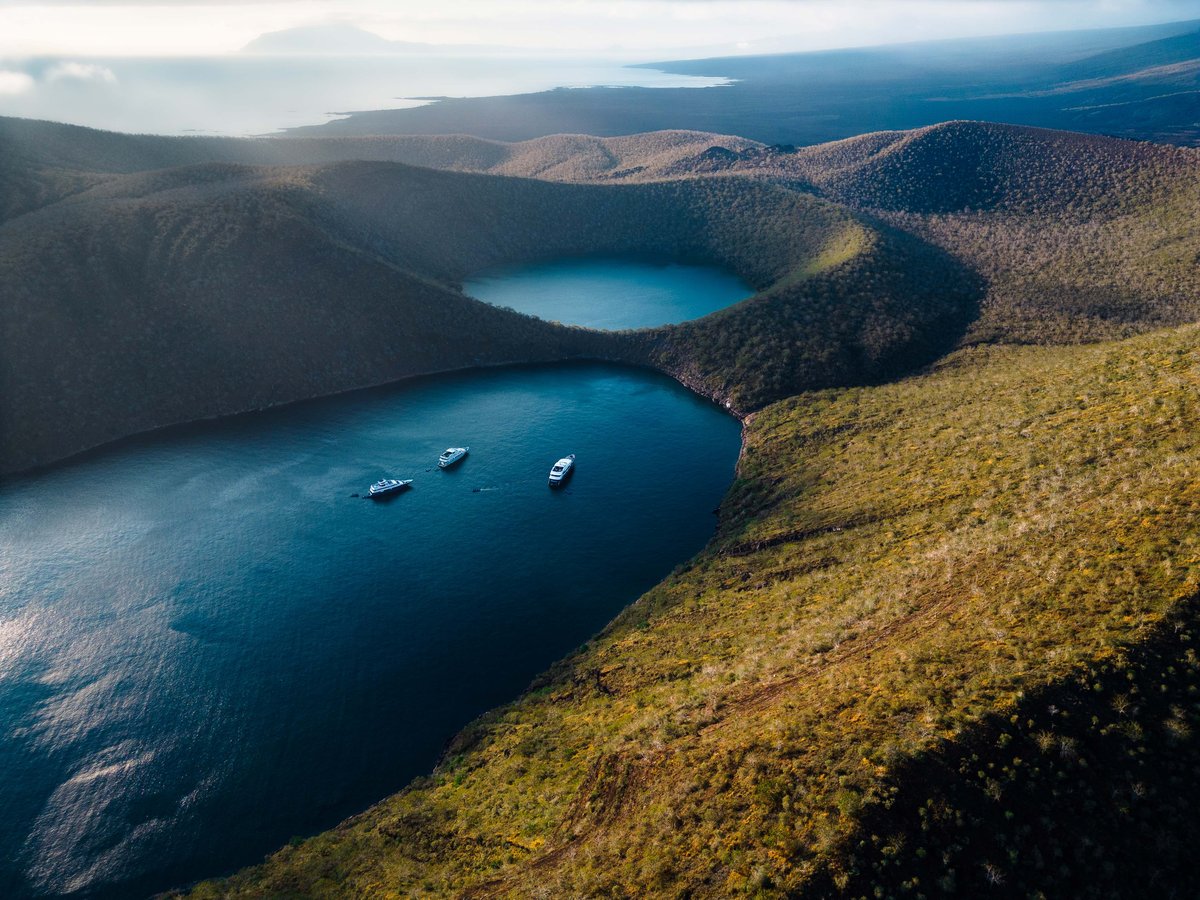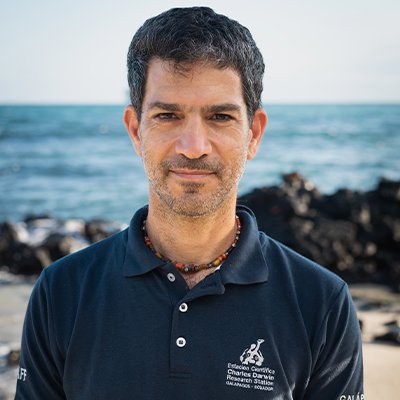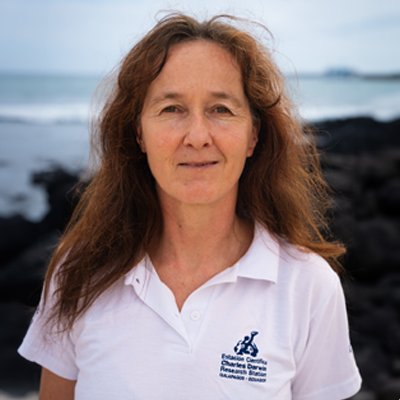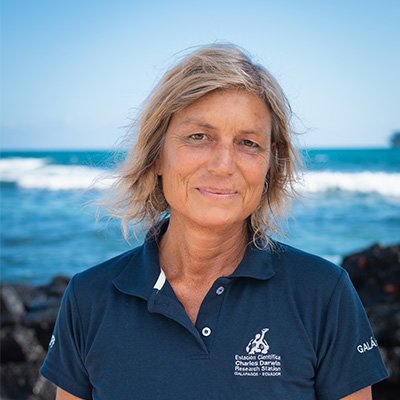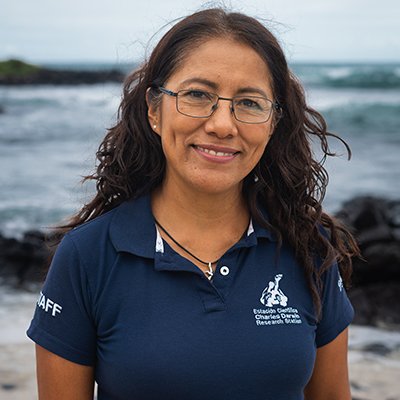Floreana Island suffered significant ecological damage due to invasive species introduced by early human colonizers such as pirates and whalers. The Floreana Ecological Restoration Project aims to recover the island’s biodiversity by removing invasive rodents and cats, reintroducing 12 native species, and restoring habitats.
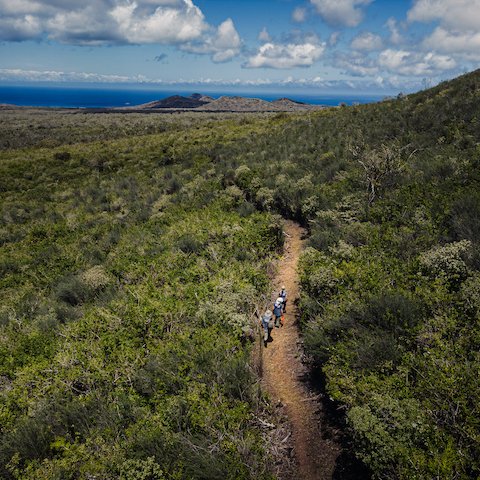
Our team
Rakan Zahawi
Executive Director and CEO
Birgit Fessl
Principal Investigator - Landbird Conservation
Heinke Jäger
Principal Investigator - Restoration of Scalesia Forests, Terrestrial Invasive Species
Patricia Jaramillo Díaz
Principal Investigator - Galapagos Verde 2050
Collaborating institutions
Galapagos National Park
Galapagos Biosecurity Agency
Jocotoco Foundation
Island Conservation
Durrell Wildlife Conservation Trust
For a full list of collaborating institutions please visit the project website.
Donors
For the full list of donors please visit the project website.
The Challenge
Floreana is one of the few islands in the Galapagos archipelago with its own, easily accessible freshwater source. Its abundant resources made it one of the first islands to be colonized by humans, attracting pirates, whalers, and other seafarers who used it as a convenient stopover to replenish supplies. This early human contact led to significant ecological damage, as invasive species—such as cattle, goats, donkeys, and rats—were introduced and left to proliferate unchecked. Meanwhile, the island's native tortoises became an ideal source of fresh meat, capable of surviving aboard ships for months during long voyages. Over time, Floreana became one of the most ecologically compromised islands in Galapagos, with invasive species displacing native and endemic wildlife and severely degrading critical habitats.
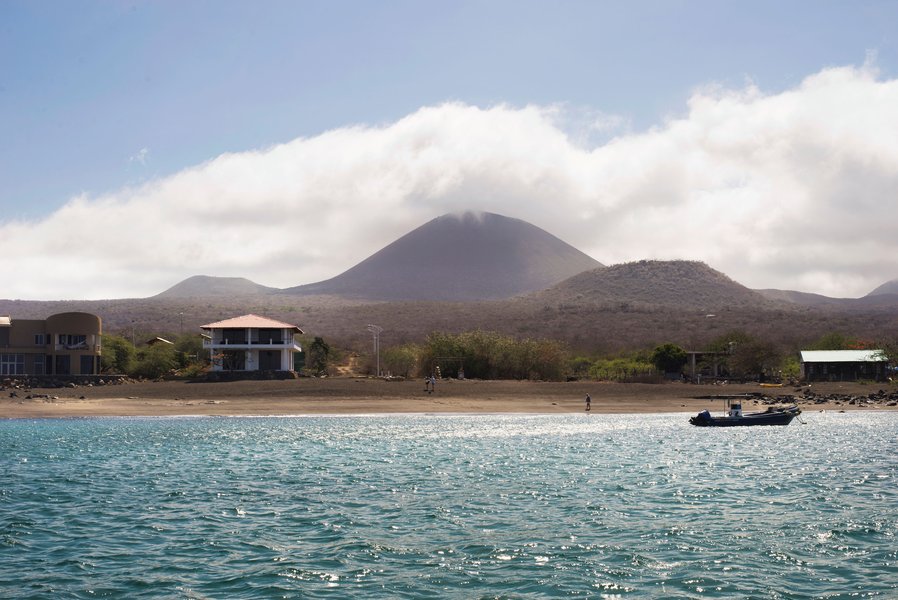
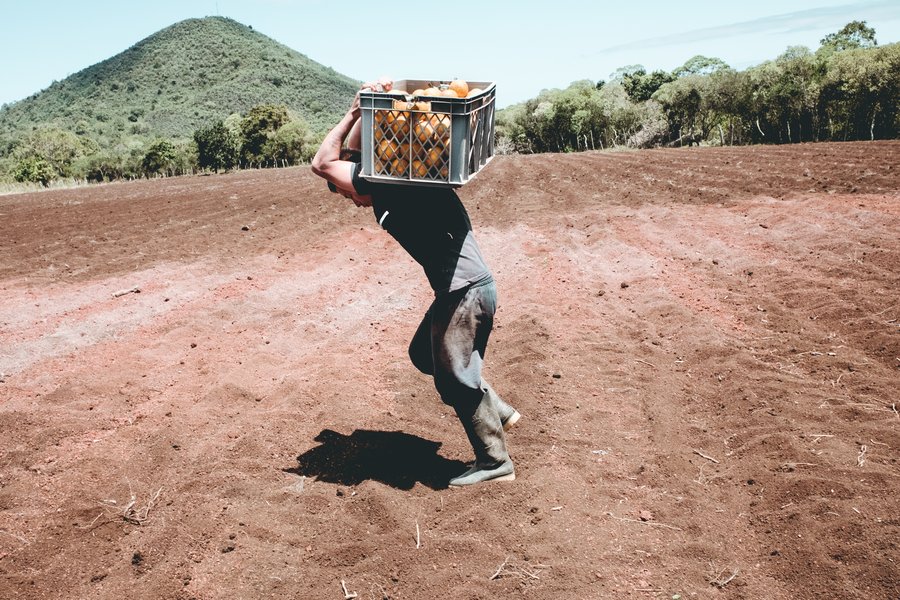
Program objective
Over a decade ago, the Floreana Ecological Restoration Project was launched to restore the ecological health of Floreana Island through a holistic approach. This initiative centers around three core actions: (1) removing invasive fauna—including two rodent species and feral cats; (2) restoring native habitats; and (3) reintroducing twelve key animal species extirpated from the island.
By integrating science-based strategies with active community engagement, the project seeks to reestablish the ecological balance on the island and improve livelihoods of Floreana’s 150 residents by promoting productive activities that harmonize with conservation objectives, benefiting both the community and the island's unique biodiversity.
A multi-institutional initiative
Such a large-scale and complex initiative is achievable only through deep collaboration. This is why the Project is led by the Galapagos National Park Directorate (GNPD) and the Galapagos Biosecurity Agency (ABG), with CDF, Jocotoco Foundation and Island Conservation as co-executors, each bringing their area of expertise to the table, while Durrell Wildlife Conservation Trust, an institution that specializes in species reintroductions, is also a key partner. Many more organizations are and will continue to be involved, each bringing their unique expertise to the table. For more information, visit the project's website:
What we do
As a co-executor, CDF brings its scientific expertise and experience in the Galapagos Islands to lead the project’s large-scale habitat restoration efforts. It also is contributing to key aspects of species reintroductions and long-term monitoring of both vegetation and fauna – in particular the bird community. Here’s a more detailed look at what we are doing:
Key to the long-term success of the Floreana Ecological Restoration initiative is the restoration of degraded habitat throughout the island. This will weaken the ability of aggressive invasive plants such as blackberry (Rubus niveus) and guava (Psidium guajava) to regain dominance of wide swaths of habitat in the island and build inherent resilience to future perturbations, be it climate change or new threats of introduced plant species. An island-wide strategy is a major undertaking and will require considerable planning and time, but it is essential to the overall success of the program. An estimated 1,170 hectares of degraded habitat need to be restored in the humid zone, which includes the area once dominated by Scalesia, while 54 hectares of dry forest habitat are in need of restoration.
To support these efforts, CDF manages Floreana's only forest nursery, annually producing thousands of seedlings and collecting seeds for future propagation, while working with the local community to raise awareness and engage them in restoration efforts.
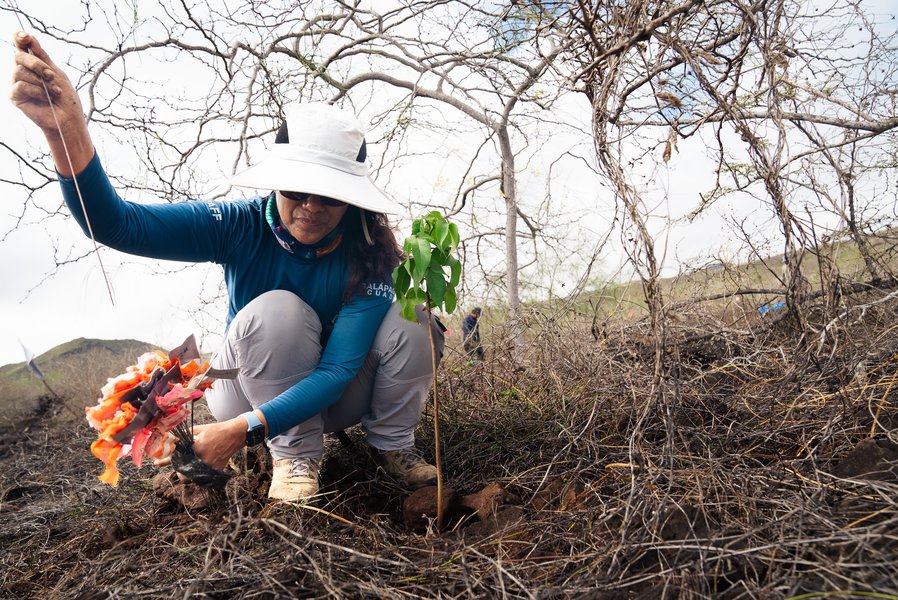
Our landbird conservation team actively supports the GNPD in preparing for the careful reintroduction of several bird species. A key example is the Little Vermilion Flycatcher, one of 10 bird species planned for reestablishment on Floreana. Reintroducing a species requires meticulous planning and research to maximize its chances of reestablishment and successful adaptation to its historical habitat. Our researchers conduct genetic analyses to select the best individuals for reintroduction, design safe and effective inter-island transport protocols, and evaluate innovative tracking technologies, such as ultra-light transmitters. We also assess optimal timing, location, and habitat conditions to ensure successful reintroduction. And then we combat specific threats, such as Avian Vampire Fly infestations, by deploying self-fumigation dispensers in key nesting areas to provide reintroduced populations a better chance of survival. These comprehensive preparations are synthesized into detailed plans, providing the GNPD with scientifically-informed strategies for restoring these species to their former ranges.
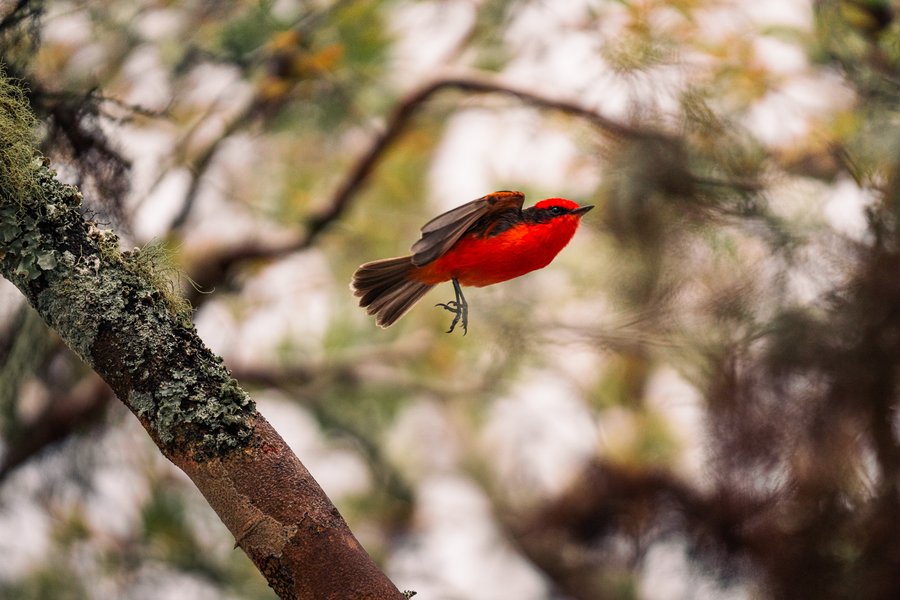
Key to any restoration effort is tracking the impact of the work being done, so we are able to tell if something is working or not, and adapt accordingly. This is why our researchers carry out ongoing ecological monitoring to assess habitat suitability, ecosystem recovery, and species responses to conservation interventions.
- Vegetation surveys are regularly conducted across permanent plots from coastal to highland areas, evaluating ecosystem health both before and after the removal of invasive rodents and cats.
- Systematic invertebrate monitoring provides baseline data on habitat quality and food availability critical to reintroduced species.
- Bird populations are monitored closely after invasive species control measures, tracking population changes and adapting conservation strategies accordingly.
These comprehensive monitoring efforts deliver essential insights into ecological dynamics, informing long-term conservation management strategies.
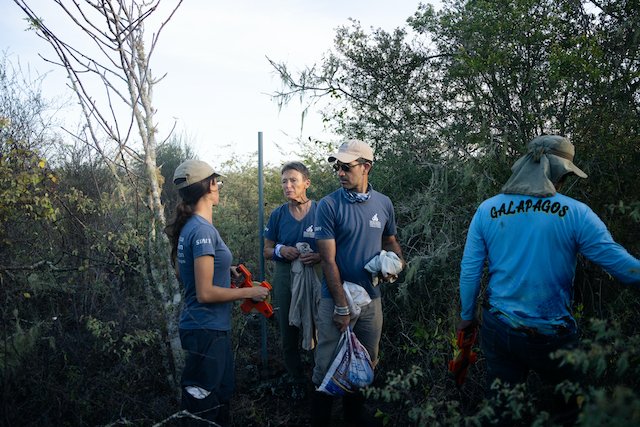
Why it matters
A holistic restoration approach strengthens ecological resilience, restores ecosystem function, and promotes overall environmental health. Floreana Island is among the most ecologically compromised islands in the Galapagos, having lost its natural ecological balance—triggering a domino effect. For instance, giant tortoises, once essential ecosystem engineers, have been absent for many decades. Without them, soil bioturbation and seed dispersal patterns have changed dramatically. Although introduced species like feral cattle partially filled this role, they ultimately caused further harm. Native habitats have been degraded, forcing endemic birds to compete with invasive animals for limited food sources, while aggressive invasive plants, such as blackberry, have spread, displacing native species and impeding local agriculture.
Restoring Floreana is therefore critical and urgent. By reviving ecological health, we benefit both the island’s wildlife and its small human community. Beyond Floreana, the project's success will serve as a model for restoring other impacted islands in the archipelago. If successful, this initiative can also demonstrate to the world that large-scale ecosystem restoration is achievable and essential for our planet’s future.
Our impact
Preparing for the reintroduction of the Floreana Mockingbird
In preparation for the re-establishment of the Floreana Mockingbird, we planted 577 seedlings from eight native plant species within a 2.5-hectare ecological corridor. To ensure a sustainable water supply for the young plants in the corridor, as well as plants in the nursery, we installed two 2,500-liter tanks with rain-collecting roofs. We also established four community ecological gardens using native and endemic species, including the "Mockingbird Refuge" corridor, in order to foster local engagement in active habitat restoration efforts.
Preparing for the reintroduction of the Little Vermilion Flycatcher
To support the reintroduction of this endemic bird to Floreana, we tested ultra-light transmitters (0.16g) on six individuals in Isabela. The transmitters had no impact on flight, movement, or foraging, confirming their suitability for rewilding efforts. Additionally, birds were held in captivity for up to 13 hours to simulate inter-island transport, and showed no signs of stress or health issues. Building on these findings, CDF researchers are drafting a detailed reintroduction plan for the GNPD to guide next steps in restoring this species to its former range. Prior to the reintroduction of the bird to Floreana, our researchers will do a trial reintroduction of the Little Vermilion Flycatcher to Santa Fe Islands–a key step that will help inform reintroduction to Floreana as we learn from this experience.
Assessing habitat suitability for species reintroduction
Our team of restoration ecologists have been monitoring habitat changes both before and after the control of invasive rodents and cats, gaining key insights about habitat suitability for the reintroduction of 12 locally extinct species on Floreana. Vegetation surveys across 24 permanent plots from the coast to the highlands, confirmed that the humid highlands support the densest plant cover, dominated by endemic Scalesia pedunculata (24%), but heavily invaded by blackberry (Rubus niveus) (37%). In contrast, the drier and transitional zones had less plant cover but served as strongholds for native and endemic species, highlighting the resilience of these ecosystems.
Our invertebrate monitoring efforts from 2022 to 2024, conducted during both the warm and cooler seasons in agricultural and protected areas, also provided a baseline for habitat quality and food availability for species like the Little Vermilion Flycatcher. Key insect orders essential for bird diets—Diptera, Hemiptera, Araneae, Lepidoptera, and Coleoptera—were recorded, but the high presence of two species of invasive fire ants remains a concern. Notably, land snail populations–a key indicator group of soil health–surged from 61 individuals in 2022 to 883 in 2024 across eight study sites covering a total surveyed area of 800 m². This increase may be linked to the rodent eradication efforts or El Niño conditions. Continued annual monitoring will help identify the long-term drivers behind this ecological shift.
Monitoring bird populations after invasive species control
After the invasive species control efforts conducted at the end of 2023, we monitored 223 points on Floreana to assess impact on bird populations. As expected, Ground Finch numbers declined, likely due to their reliance on ground feeding areas where bait was placed. However, populations of other endemic species, including the critically endangered Medium Tree-finch, remained stable, indicating a positive outcome for conservation efforts. We also rediscoverd the Galapagos Rail, thought to have been extinct on the island!
Self-fumigation to combat the Avian Vampire Fly
To further support bird populations after the eradication campaign, CDF researchers placed 90 self-fumigation dispensers with insecticide-treated nest material in key nesting areas on Floreana. This method helps control Avian Vampire Fly infestations, reducing chick mortality of threatened bird species.
Maintaining the island’s only forest nursery
To support our habitat restoration efforts, 1,019 seedlings were produced in the Island’s only forest nursery in 2024, which is managed by CDF. Key species included Bursera graveolens, Scalesia pedunculata, Opuntia megasperma, Croton scouleri, Vachellia macracantha, and Lecocarpus pinnatifidus. Additionally, 860 seeds from seven species were collected and stored for future propagation.
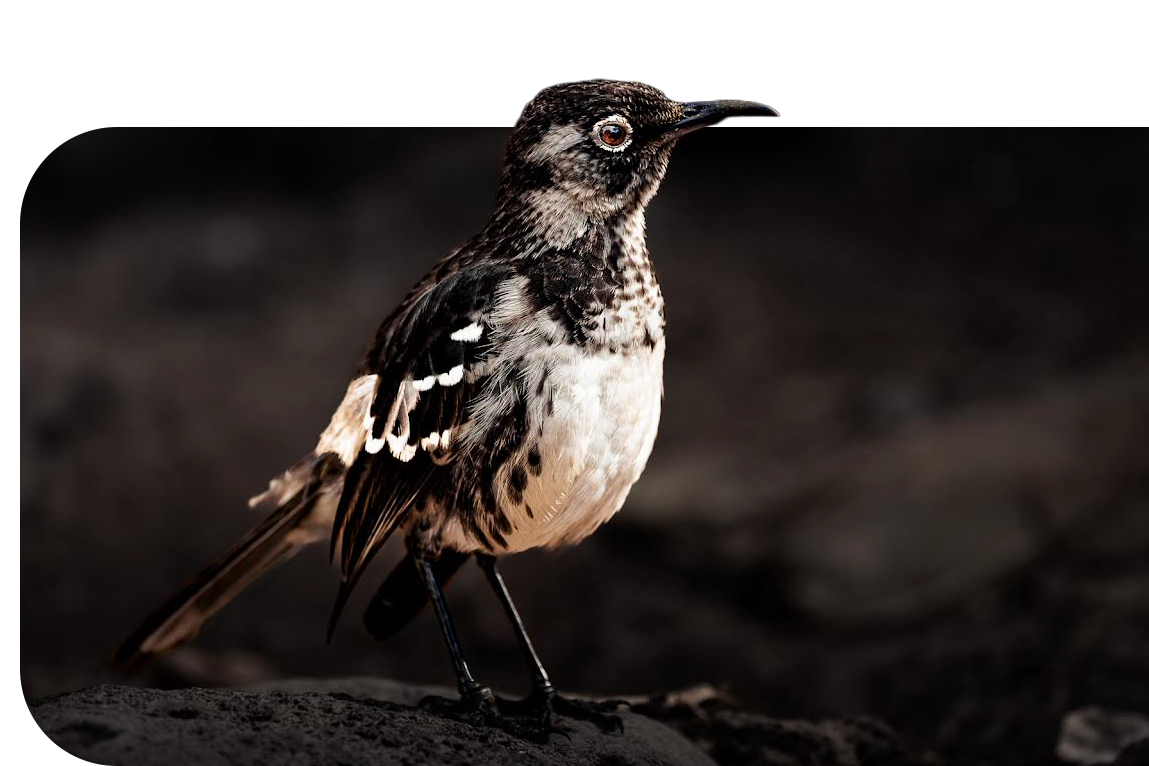
Why you should support us
Floreana Island has lost much of its unique biodiversity due to invasive species and habitat degradation. Long-term recovery of this critical ecosystem depends on science-based restoration strategies and effective species reintroductions. By supporting our project, you can help CDF restore habitats essential for native wildlife, reestablish lost bird species, like this Floreana mockingbird, and monitor ecosystem health. Furthermore, if successful this major initiative can serve as a template for the intervention and restoration of other larger and more complex islands in the archipelago.
Here are specific reasons to support our program:
- To support one of the most ambitious holistic restoration initiatives in the world – a project that if successful could serve as a template for other islands in Galapagos and beyond.
- To restore critical habitats by planting native vegetation and maintaining the island’s only forest nursery.
- To support the careful reintroduction of key native bird species, such as the Floreana Mockingbird and Little Vermilion Flycatcher.
- To provide scientific monitoring essential for tracking ecosystem recovery and improving conservation strategies.
- To ensure a sustainable future for Floreana’s unique biodiversity, benefiting both wildlife and the local community.
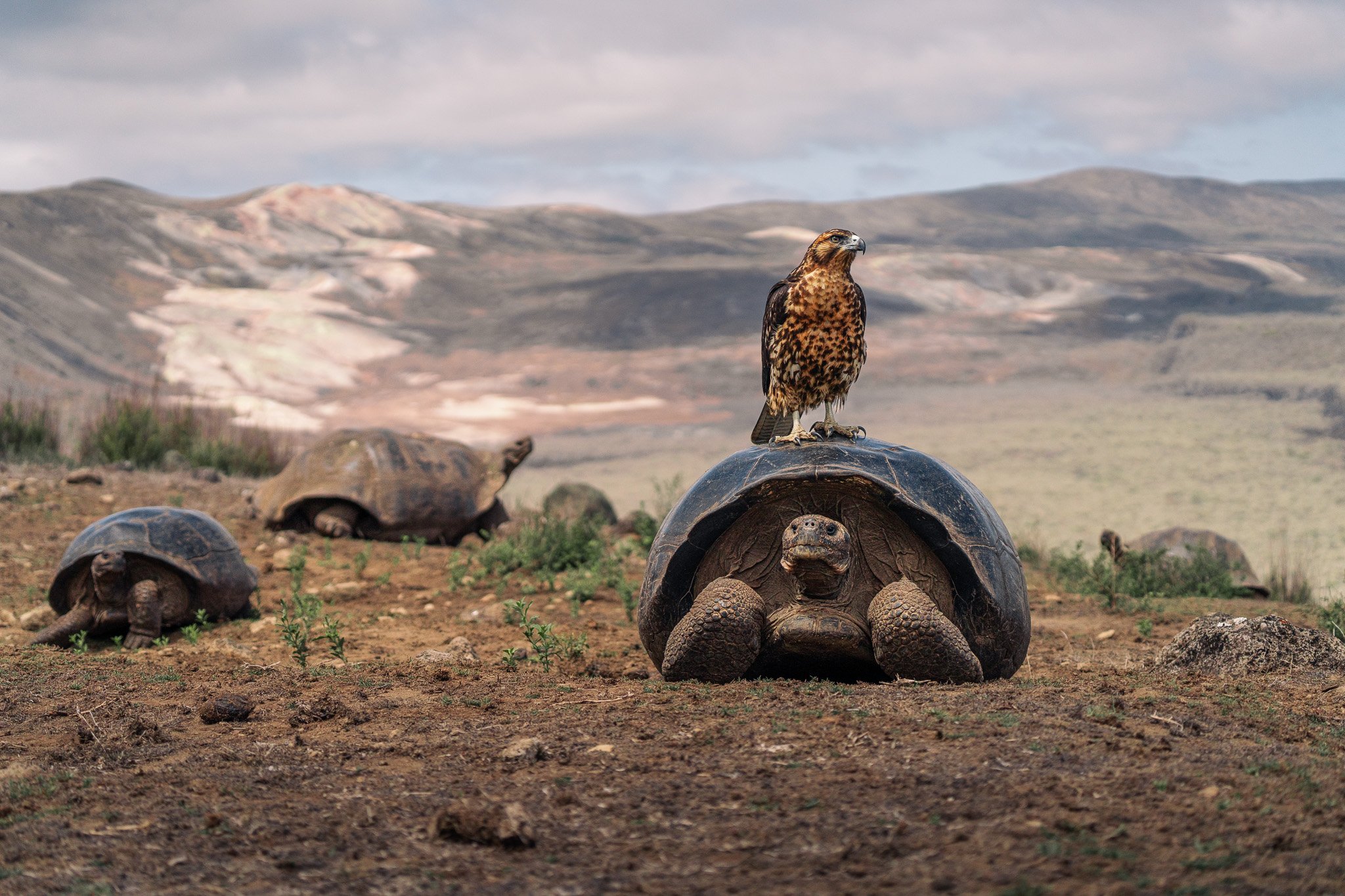
Protege Galápagos, Impacta al Mundo
El impacto que generas en este pequeño ecosistema de enorme biodiversidad es parte de una huella más grande que estás dejando para el futuro del mundo. Al realizar una donación, te invitamos a unirte a nosotros en nuestra misión de proteger uno de los tesoros naturales más importantes de nuestro planeta a través de la ciencia y acciones de conservación. Gracias por generar un impacto con nosotros.
